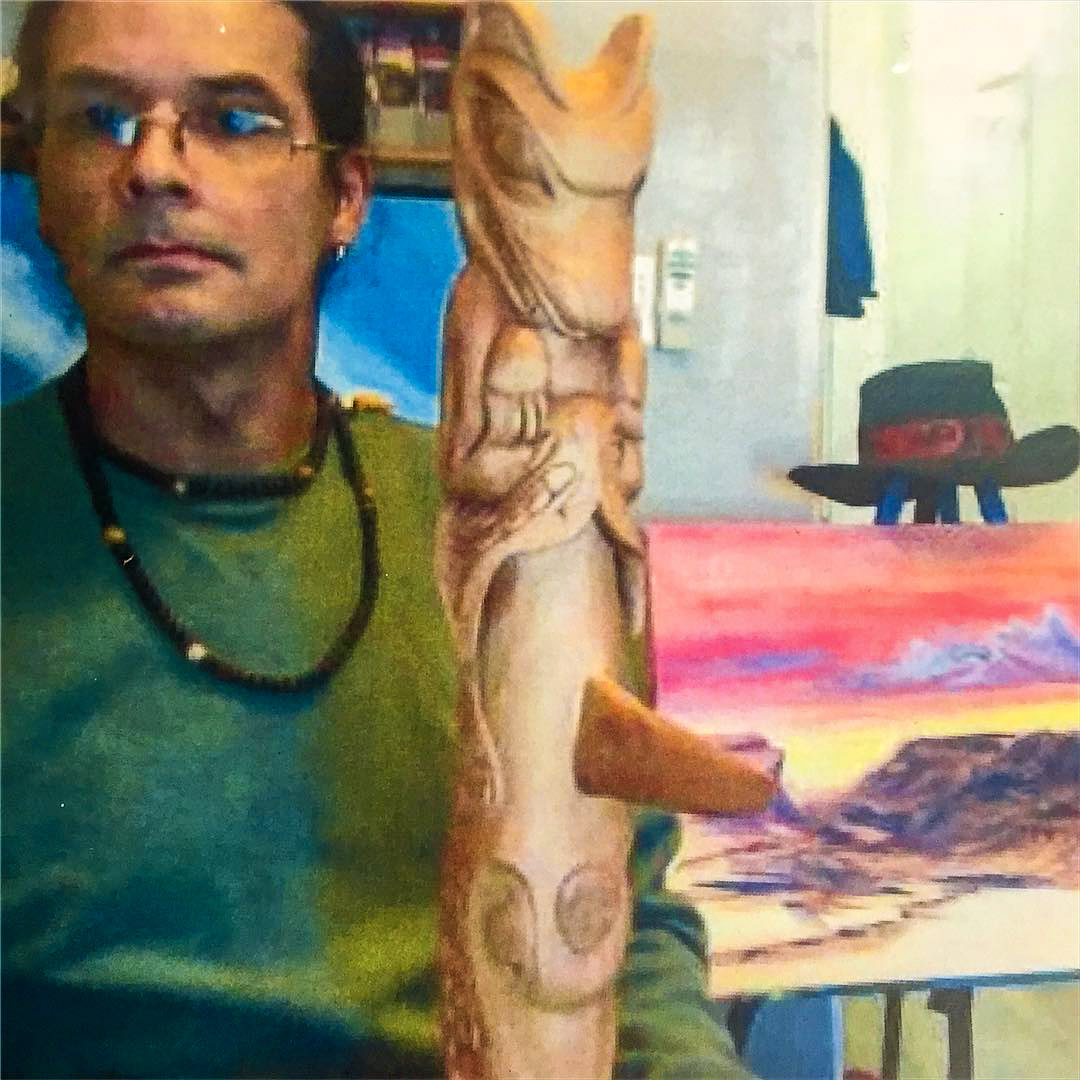Indianz.Com > News > Fraudulent Native artist charged with violating Indian Arts and Crafts Act
Fraudulent Native artist charged with violating Indian Arts and Crafts Act
Wednesday, November 24, 2021
Indianz.Com
A Washington man who claims to be a Native artist has been charged with violating the Indian Arts and Crafts Act and for illegally possessing eagle feathers and other bird parts.
Lewis Anthony Rath, who goes by Tony Rath, claimed to be a part of the San Carlos Apache Tribe, a federally recognized Indian nation in Arizona. As such, he was marketing and promoting his works as “Indian” made, according to a federal complaint first reported by The Daily Beast.
However, federal agents determined Rath was “not a lineal descendant or an enrolled member of the San Carlos Apache Tribe, or any other federal or state recognized Indian tribe in the United States,” the November 23 complaint reads.
“RATH admitted that he is not a lineal descendant or an enrolled member of the San Carlos Apache Tribe,” Sean W. Hyrons, a special agent with the U.S. Fish and Wildlife Service, writes in the 14-page filing. “He initially denied ever representing himself as an Apache from San Carlos to any of his customers, but later admitted telling his customers that he was San Carlos Apache. RATH subsequently claimed that his birth mother told him he had some Indian bloodlines that may be Apache.”
“However, he explained that he later discovered through DNA testing that he had Mayan ancestry from Mexico,” Hyrons continued.
As part of an investigation that included undercover agents, Hyrons said federal authorities discovered Rath’s works were being sold at two locations in Seattle: Raven’s Nest Treasure and Ye Olde Curiosity Shop. Both businesses said Rath held himself out to be an Indian and provided them with biographies claiming the same, according to the complaint.
However, the owner of Raven’s Nest Treasure — identified in the filing by the initials “MS” — became reticent when interviewed in person by federal agents and “stated he had never conspired or agreed with anyone to misrepresent goods sold at the gallery as Indian produced.”

Read More on the Story
‘Apache’ Artist Faked Native Heritage to Sell His Work, Feds Say (The Daily Beast November 24, 2021
Search
Filed Under
Tags
More Headlines
Judge hears arguments in federal funding case
NAFOA: 5 Things You Need to Know this Week (February 3, 2025)
Native Hawaiian performer Kalani Peʻa wins fourth Grammy for album dedicated to matriarchs
Department of Defense cancels National Native American Heritage Month
Chuck Hoskin: Cherokee Nation signs first disaster management agreement in Indian Country
DVIDS: Umatilla Tribes sign fish passage agreement
Native America Calling: Balancing economic safety and development for payday loan businesses on tribal land
‘Nothing’s changed. Nothing’s gotten better’: President Trump’s nominee takes on Indian health
Native America Calling: A Mohawk chef on TV and a Native foods cookbook
Cronkite News: Arizona governor promises $7 million for NAGPRA work
Indian Country still on high alert over President Trump’s freeze on federal funding
Native America Calling: Federal funds under fire from President Donald Trump
Native America Calling: Native youth building the foundation for future leadership
‘A step in the wrong direction’: President Trump’s funding freeze shakes up Indian Country
Native America Calling: From road access to ICE immigration raids, tribes are asserting sovereignty
More Headlines
NAFOA: 5 Things You Need to Know this Week (February 3, 2025)
Native Hawaiian performer Kalani Peʻa wins fourth Grammy for album dedicated to matriarchs
Department of Defense cancels National Native American Heritage Month
Chuck Hoskin: Cherokee Nation signs first disaster management agreement in Indian Country
DVIDS: Umatilla Tribes sign fish passage agreement
Native America Calling: Balancing economic safety and development for payday loan businesses on tribal land
‘Nothing’s changed. Nothing’s gotten better’: President Trump’s nominee takes on Indian health
Native America Calling: A Mohawk chef on TV and a Native foods cookbook
Cronkite News: Arizona governor promises $7 million for NAGPRA work
Indian Country still on high alert over President Trump’s freeze on federal funding
Native America Calling: Federal funds under fire from President Donald Trump
Native America Calling: Native youth building the foundation for future leadership
‘A step in the wrong direction’: President Trump’s funding freeze shakes up Indian Country
Native America Calling: From road access to ICE immigration raids, tribes are asserting sovereignty
More Headlines

